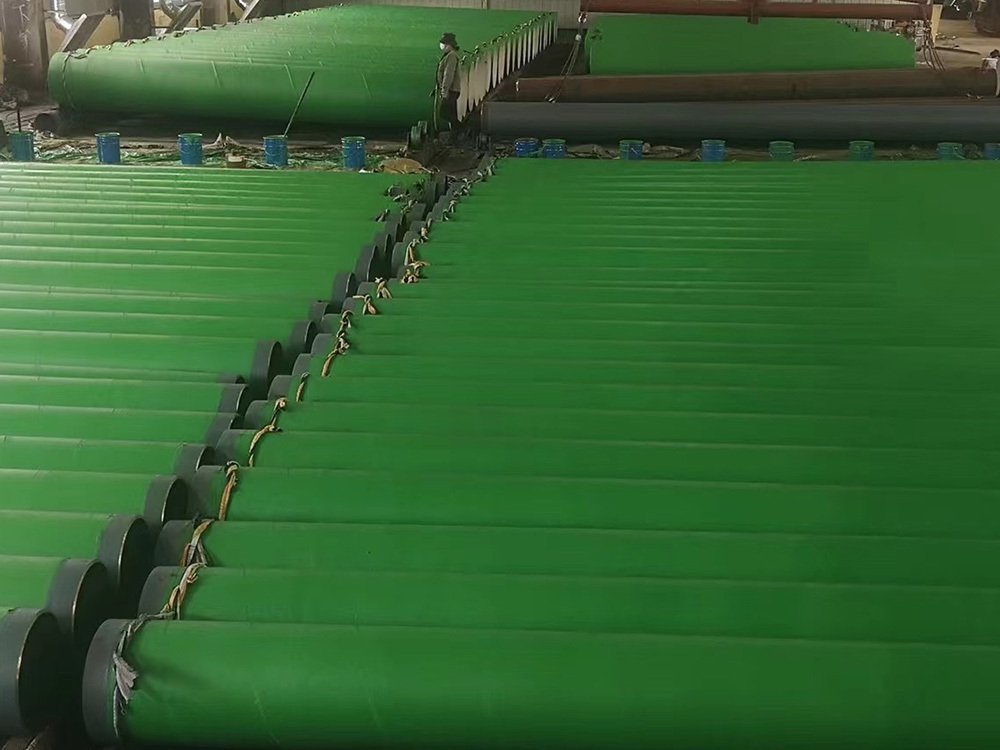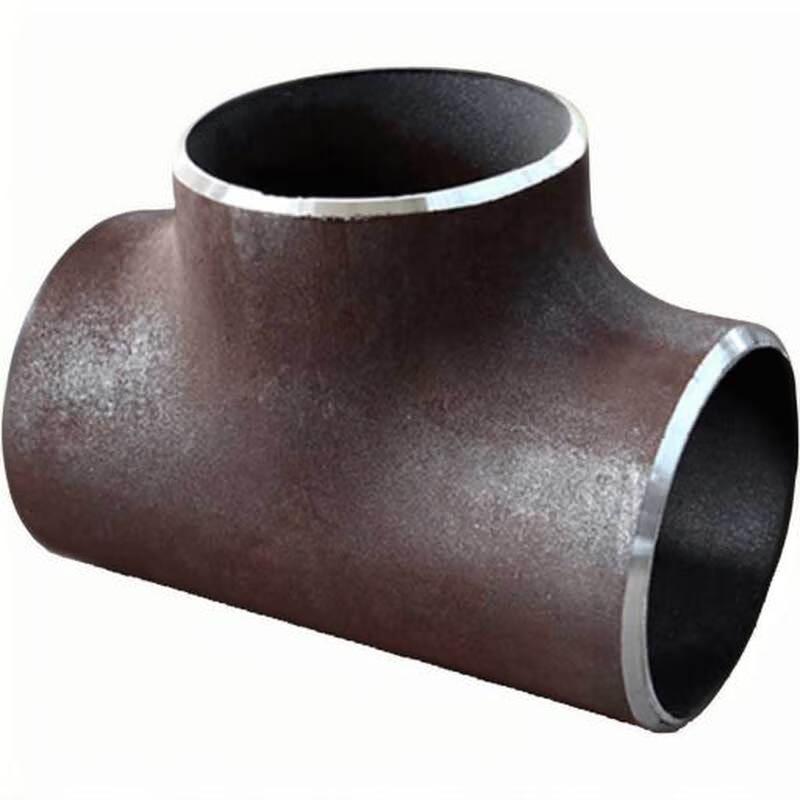Key Considerations When Installing 3PE Anti-Corrosion Steel Pipes: A Comprehensive Guide
2025-08-28

Key Considerations When Installing 3PE Anti-Corrosion Steel Pipes
Table of Contents
- Introduction to 3PE Anti-Corrosion Steel Pipes
- Benefits of Using 3PE Anti-Corrosion Steel Pipes
- Surface Preparation for Optimal Adhesion
- Effective Installation Techniques
- Testing and Inspection Methods
- Environmental Considerations in Installation
- Common Mistakes to Avoid During Installation
- Maintenance Tips for Longevity
- Conclusion
- Frequently Asked Questions
Introduction to 3PE Anti-Corrosion Steel Pipes
3PE (Three-Layer Polyethylene) anti-corrosion steel pipes are engineered for long-lasting durability in various industries, including construction, oil and gas, and water supply. The three layers consist of an adhesive layer, a polyethylene layer, and a fusion-bonded epoxy coating, making them highly resistant to corrosion and environmental stressors. Understanding the proper installation methods is crucial for maximizing the effectiveness and lifespan of these pipes.
Benefits of Using 3PE Anti-Corrosion Steel Pipes
The adoption of 3PE anti-corrosion steel pipes offers numerous advantages:
1. Enhanced Corrosion Resistance
The multi-layer coating effectively shields the steel substrate from corrosive elements, ensuring a prolonged service life.
2. Cost-Effective Solution
While the initial investment may be higher than traditional pipes, the reduced maintenance costs and extended longevity lead to significant savings over time.
3. Versatile Applications
Suitable for various environments, 3PE pipes can be utilized in both underground and above-ground applications, addressing the needs of diverse industries.
Surface Preparation for Optimal Adhesion
Proper surface preparation is critical for effective adhesion of the 3PE coating to the steel pipe. Follow these steps:
1. Cleaning
The surface must be thoroughly cleaned to remove dirt, oil, rust, and other contaminants. Using high-pressure water or abrasive blasting can yield the best results.
2. Surface Profile
Creating an adequate surface profile enhances adhesion. Aim for a roughened texture that allows the adhesive layer to bond effectively with the steel surface.
3. Drying
Ensure the surface is completely dry before applying the coating. Moisture can compromise the bond and lead to corrosion.
Effective Installation Techniques
Installing 3PE anti-corrosion steel pipes requires specific techniques to ensure they perform optimally.
1. Proper Alignment
Ensure that the pipes are aligned correctly to prevent undue stress on joints and fittings. Misalignment can lead to leaks and early failure.
2. Joint Application
When connecting pipes, use compatible fittings and ensure that joints are sealed adequately to prevent moisture ingress.
3. Environmental Factors
Consider weather conditions during installation. Extreme temperatures or wet conditions can affect the curing process of adhesives.
Testing and Inspection Methods
To ensure the integrity of the installed 3PE anti-corrosion steel pipes, regular testing and inspection are necessary.
1. Visual Inspection
Conduct a thorough visual inspection post-installation to check for any obvious defects or misalignments.
2. Hydrostatic Testing
This test involves filling the pipes with water and monitoring for leaks. It validates the strength of the joints and overall system integrity.
3. Non-Destructive Testing (NDT)
Utilize NDT methods such as ultrasonic testing to assess the pipe wall thickness and detect hidden defects without damaging the pipes.
Environmental Considerations in Installation
Installation sites can present unique environmental challenges that must be addressed for successful outcomes.
1. Soil Composition
Analyze soil types in the installation area. Highly acidic or alkaline soils can accelerate corrosion rates, necessitating additional protective measures.
2. Groundwater Levels
High groundwater levels can impact the effectiveness of the protective coating. Adequate drainage and waterproofing techniques should be employed to mitigate risks.
3. Temperature Variations
Extreme temperature fluctuations can affect the physical properties of the 3PE coating. Ensure installation methods account for thermal expansion and contraction.
Common Mistakes to Avoid During Installation
Being aware of common pitfalls can save time, resources, and ensure the longevity of your piping system.
1. Inadequate Surface Preparation
Neglecting the necessary cleaning and profiling steps can lead to poor adhesion, compromising the entire system.
2. Overlooking Environmental Factors
Failing to consider soil and groundwater conditions can lead to premature corrosion and system failures.
3. Improper Inspection Procedures
Skipping thorough inspections post-installation can result in undetected issues that may escalate into significant problems.
Maintenance Tips for Longevity
To maximize the lifespan of 3PE anti-corrosion steel pipes, regular maintenance is key.
1. Routine Inspections
Schedule regular inspections to detect any signs of wear or damage. Early detection can prevent costly repairs.
2. Cleaning
Keep the surface of the pipes clean from debris and environmental contaminants to maintain their protective qualities.
3. Repair Protocols
Establish clear procedures for addressing any damage or issues that arise during the lifespan of the pipes to ensure they continue to perform optimally.
Conclusion
Installing 3PE anti-corrosion steel pipes requires meticulous planning and execution to ensure their effectiveness and longevity. By focusing on surface preparation, employing proper installation techniques, and performing regular maintenance, you can maximize the performance of these pipes in various applications. Understanding and addressing environmental factors and avoiding common installation mistakes will contribute to a successful piping system that stands the test of time.
Frequently Asked Questions
1. What is the lifespan of 3PE anti-corrosion steel pipes?
Typically, 3PE pipes can last anywhere from 25 to 50 years, depending on environmental conditions and maintenance practices.
2. Can 3PE anti-corrosion steel pipes be used in high-temperature applications?
While they are designed for diverse conditions, extreme heat can affect the integrity of the 3PE coating. Consult with manufacturers for specific applications.
3. How often should I inspect my installed 3PE pipes?
Regular inspections every 6 to 12 months are recommended to detect potential issues early.
4. Are there specific cleaning products I should use on 3PE pipes?
Use non-corrosive and non-abrasive cleaning agents to avoid damaging the protective coating.
5. What should I do if I find damage during an inspection?
Address any damage immediately by following established repair protocols to prevent further deterioration and ensure system integrity.
Blog
Key Features That Make 304L Stainless Steel Elbow a Preferred Choice in Construction and Decoration








